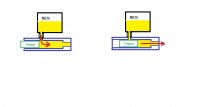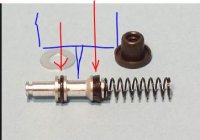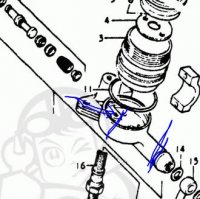treitz
Over 1,000 Posts
Okay, so I've read the manual, and every article online, but for some reason I always have the hardest time getting it to work. There is no fluid in the lines at the moment, but no matter how many times I go through the process, the fluid just will not leave the reservoir.
Master cylinder and reservoir are brand new, brand new stainless braided brake lines, front brakes are dual caliper 2005 Ninja 636 brakes.
Technique I'm following...
1) Fill master cylinder reservoir
2) Fill a jar with brake fluid
3) place a hose on the nipple and into the brake fluid in the jar
4) with the nipple closed, pump the handle
5) with the handle pulled (on) loosen the nipple
6) release the handle
7) tighten the handle
8) repeat
Are there any fancy tricks that I'm missing?
Master cylinder and reservoir are brand new, brand new stainless braided brake lines, front brakes are dual caliper 2005 Ninja 636 brakes.
Technique I'm following...
1) Fill master cylinder reservoir
2) Fill a jar with brake fluid
3) place a hose on the nipple and into the brake fluid in the jar
4) with the nipple closed, pump the handle
5) with the handle pulled (on) loosen the nipple
6) release the handle
7) tighten the handle
8) repeat
Are there any fancy tricks that I'm missing?







